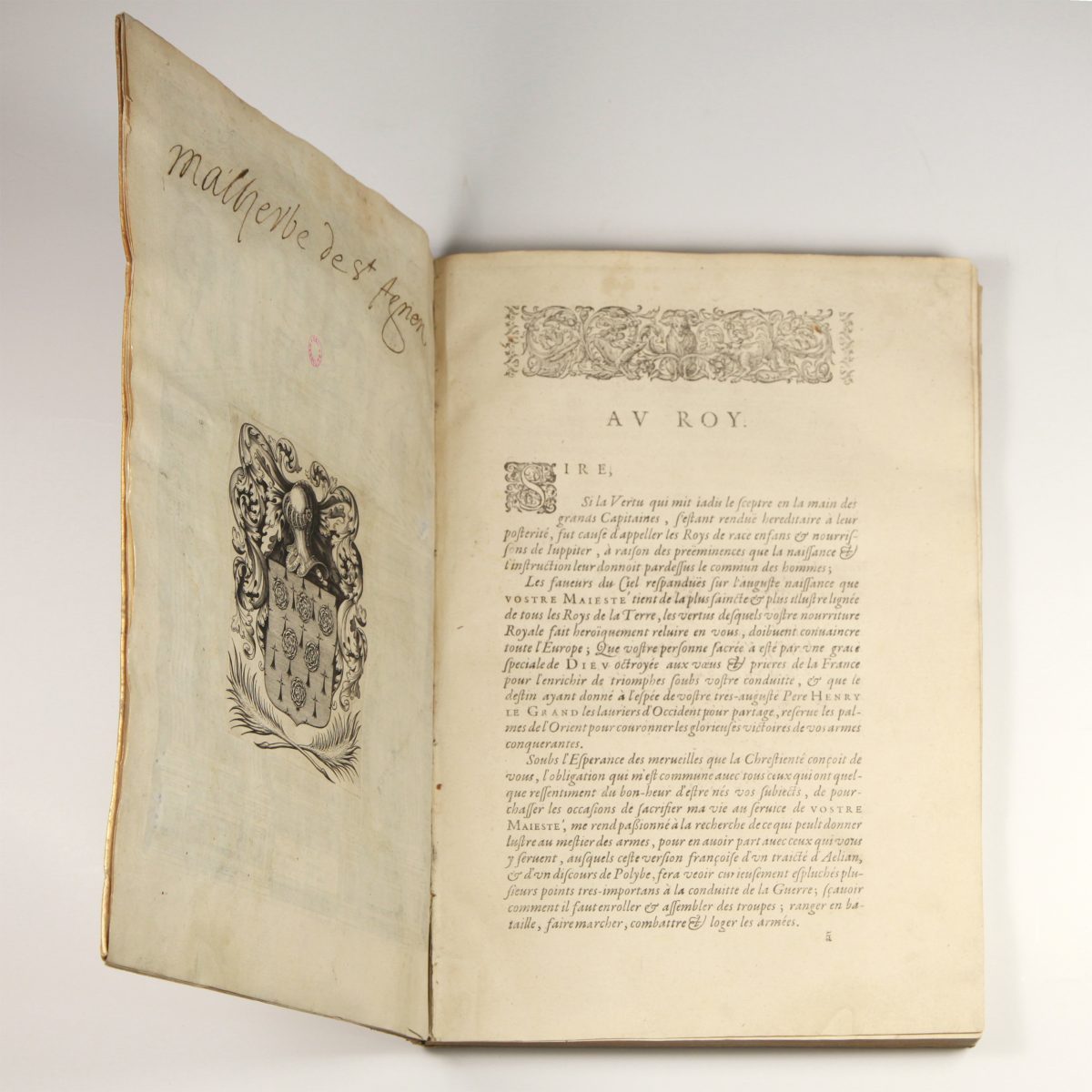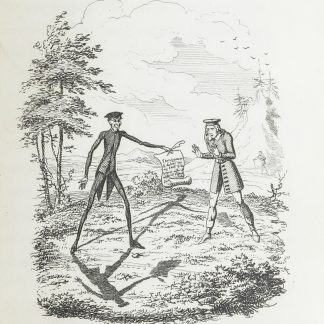Description
FIRST EDITION of Louis de Machault's translation and first printing of Jaspar Isaac's figures.
This is the second French translation of this text by Elijah, nicknamed Elijah the Tactician (Aelianus Tacticus) or Elijah the Elder, a Greek writer of the late 1st and early 2nd centuries. A first translation in Gothic letters by Nicole Volkir or Volskir, Lord of Serouville, occupied the last part of the work. Because of war and flower of chivalry printed by Wechel 1536. In this work, military figures were represented only in typographical characters.
The present edition includes 19 large copper-engraved figures printed for the first time by Jaspar Isaac, a true artistic interpretation of the Greek soldiers' placements.
Engraver and a French print merchant of Flemish origin, Jaspar Isaac (Antwerp, 1585 ? - Paris, 23 May 1654), originally from Flanders, was the brother-in-law of Thomas de Leu. His daughter Marguerite married the Reims engraver Nicolas Regnesson in June 1649. He illustrated many works including Ovid's Metamorphoses (Langelier, 1619), The Journey from Jerusalem and other places on Earth (Denis Moreau, 1621) and The Fifteen Books of Euclid's Geometric Elements (Denis Moreau, 1622).
Jasper Isaac also signs the rich architectural title-frontispiece surmounted by the equestrian portrait of King Louis XIII.
The militia of the Romans from the sixth book of the History of Polyp occupies the second part of the book starting on page 97.
COPY OF THE POET FRANÇOIS DE MALHERBE
The copy bears the autograph signature "St Agnen's Weed" on the back of the frontispiece as well as two engraved ex-libris of the Malherbe family, one under the signature, the other on the first inside cover. These two marks of belonging are similar to those described by Ambroise Roux-Alphéran in 1840 in the book Biographical research on Malherbe and his family:
"Mr. Rouard, librarian of this town and our honourable confrere, has in his private library another volume [...].The works of maistre Alain Çhartier clerk notary and secretary to Kings Charles VI and VII, published by André Ducheme Paris 1617] bought by Malherbe probably later than the two previous ones and much more curious than these in that the poet's signature is on the back of the frontispiece on two lines. St Agnen's Weed Below this signature is a small engraved shield with six roses, 5 2 and 1, surrounded by ermines in a silver field above the helmet that surmounts the shield, the visor of which is turned to the left. "
Copy of the collector and explorer Robert Hottot:
Washed and restored copy, mitered and put in old vellum. Part of the spine of the original binding, with fleur-de-lys, has been glued on the back cover. The dilapidated state of this relic from the Malherbe binding probably explains the restorations and re-covering.
He was probably executed at the request of Robert Hottot, whose R.H. exlibris created for him by André Rouveyre is glued below that of Malherbe. Robert Hottot (1884-1939), nephew of the collector and physician Ernest Hottot, was close to Max Jacob and the Parisian avant-garde. He was the origin of many discoveries in Africa and Asia. Part of his collection was bequeathed to the Pitt Rivers Museum in 1994.
The copy then joined the Roger-Pierre Mongolien collection, whose stamp it bears.
In spite of the reported defects, the skillfully restored copy is attractive.
Provenances: François de Malherbe (Signature and ex-libris), Robert Hottot (ex-libris), Roger-Pierre Mongolien (stamp).
Page 45/46 misplaced.
Folio errors page 89 marked 93, jump from 91 to 97. FULL
Washed, restored, mitered and placed in old vellum.














